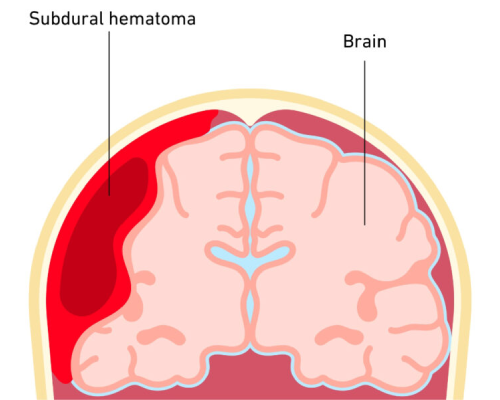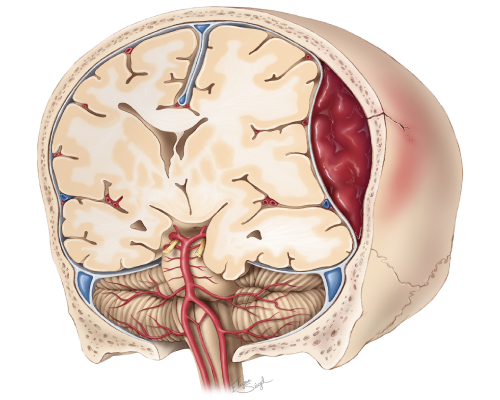
Managing Traumatic Brain Injury: Surgical Interventions for SDH, EDH, and ICH
Traumatic Brain Injury (TBI) is a critical medical condition that often results from severe head trauma. The impact can cause bleeding within the brain or between the brain and skull, leading to life-threatening conditions such as Subdural Hematoma (SDH), Epidural Hematoma (EDH), and Intracerebral Hemorrhage (ICH). Each of these conditions requires specific surgical interventions to mitigate damage and improve patient outcomes.
Subdural Hematoma (SDH)
What is SDH?
Subdural Hematoma occurs when blood collects between the brain and the dura mater, the brain's outermost covering. This is usually caused by a head injury that tears the veins connecting the surface of the brain to the dura.
Symptoms:
Symptoms may include headaches, confusion, drowsiness, and in severe cases, loss of consciousness. The symptoms may develop rapidly, requiring immediate medical attention.

Surgical Interventions:
-
Burr Hole Evacuation
This procedure involves drilling small holes in the skull to drain the accumulated blood, relieving pressure on the brain.
-
Craniotomy
In more severe cases, a craniotomy may be necessary, where a larger section of the skull is removed to access and evacuate the hematoma. The bone flap is usually replaced after the procedure.
Epidural Hematoma (EDH)
What is EDH?
Epidural Hematoma occurs when blood collects between the inner surface of the skull and the dura mater. This is typically caused by a tear in an artery, often following a skull fracture.
Symptoms
Patients with EDH may experience a brief loss of consciousness usually followed by a lucid interval, then a rapid decline in mental status. Symptoms may also include severe headaches, vomiting, and dilated pupils.
Surgical Interventions

-
Craniotomy
A craniotomy is often performed to remove the hematoma and prevent further damage. The surgeon removes part of the skull to access and evacuate the blood clot.
-
Decompression
In some cases, decompression may be necessary to alleviate pressure within the skull, preventing further brain injury.
Intracerebral Hemorrhage (ICH)
What is ICH?
Intracerebral Hemorrhage is a kind of stroke caused by bleeding within the brain tissue itself. This can result from high blood pressure, aneurysms, or head trauma.
Symptoms
Symptoms of ICH can include sudden headache, weakness, confusion, difficulty speaking, and loss of consciousness. The extent of symptoms depends on the location and size of the hemorrhage.

Surgical Interventions
-
Craniotomy
Similar to the procedures for SDH and EDH, a craniotomy may be necessary to evacuate the blood and relieve pressure on the brain. The surgical approach is decided by the location of the hemorrhage.
-
Endoscopic Surgery
In certain cases, minimally invasive techniques using an endoscope may be employed to remove the blood clot, reducing recovery time and minimizing damage to surrounding brain tissue.

Dr. Adam Kamrudeen
Neurosurgeon in Navi Mumbai
- MBBS, MS – General Surgery,
- MCh – Neuro Surgery
- Brain & Spine Surgeon in Navi Mumbai
Conclusion
Timely and appropriate surgical intervention is critical in managing Traumatic Brain Injuries involving SDH, EDH, and ICH. The type of surgical technique depends on the type and severity of the injury, and early diagnosis is essential to improve outcomes. Multidisciplinary care, including neurosurgery, critical care, and rehabilitation, plays a crucial role in the recovery process, supporting patients regain function and quality of life after a traumatic brain injury.
If you or a loved one has suffered a traumatic brain injury involving subdural hematoma (SDH), epidural hematoma (EDH), or intracerebral hemorrhage (ICH), consulting with Dr. Adam Kamrudeen, an expert neurosurgeon in Navi Mumbai, is critical. These severe brain injuries require immediate and specialized surgical intervention to prevent long-term damage or life-threatening complications. Dr. Adam Kamrudeen will assess the injury and discuss the surgical options necessary to manage the condition effectively.
Schedule a consultation with Dr. Adam Kamrudeen to ensure the best care for traumatic brain injuries.
